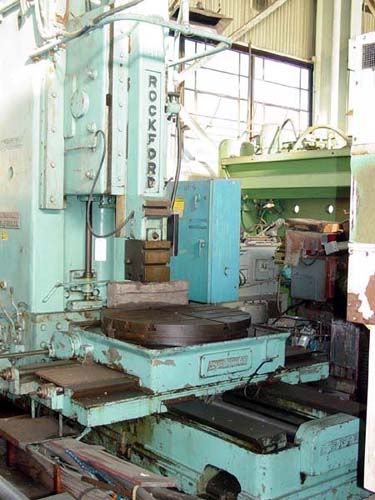rake60
Well-Known Member
- Joined
- Jul 8, 2007
- Messages
- 4,756
- Reaction score
- 125
Way back in 1978 I got my very first "machinist" job as a production machine operator.
I ran secondary machines.
That is to say, we did the finish machine work that the automatic machines couldn't do.
Today a CNC machine changes tool and takes them to the work piece.
In 1978 the machine took the work piece to the tools.
The machines of choice were multi-spindle automatic screw machines.
You load the spindle feed tubes with 20 foot long bars of steel.
The machine would index those tubes and spindles around to each position where a tool
or set of tools would perform its designated operation.
The final position would cut the finished part off.
I happened a video of a 6 spindle automatic screw machine in use on YouTube.
It looks pretty old fashioned today, but they sure made a lot of parts in their day!
[ame]http://www.youtube.com/watch?v=om613Cfp0Ag[/ame]
Micro switches, relays, die heads, tapping heads, fine thread adjusting screws.....
You needed to be part machinist, part electrician, part plumber, part mechanic
and a little bit of magician wouldn't hurt.
In some strange way, I kind of miss those old automatic screw machines.
Rick
I ran secondary machines.
That is to say, we did the finish machine work that the automatic machines couldn't do.
Today a CNC machine changes tool and takes them to the work piece.
In 1978 the machine took the work piece to the tools.
The machines of choice were multi-spindle automatic screw machines.
You load the spindle feed tubes with 20 foot long bars of steel.
The machine would index those tubes and spindles around to each position where a tool
or set of tools would perform its designated operation.
The final position would cut the finished part off.
I happened a video of a 6 spindle automatic screw machine in use on YouTube.
It looks pretty old fashioned today, but they sure made a lot of parts in their day!
[ame]http://www.youtube.com/watch?v=om613Cfp0Ag[/ame]
Micro switches, relays, die heads, tapping heads, fine thread adjusting screws.....
You needed to be part machinist, part electrician, part plumber, part mechanic
and a little bit of magician wouldn't hurt.
In some strange way, I kind of miss those old automatic screw machines.
Rick






